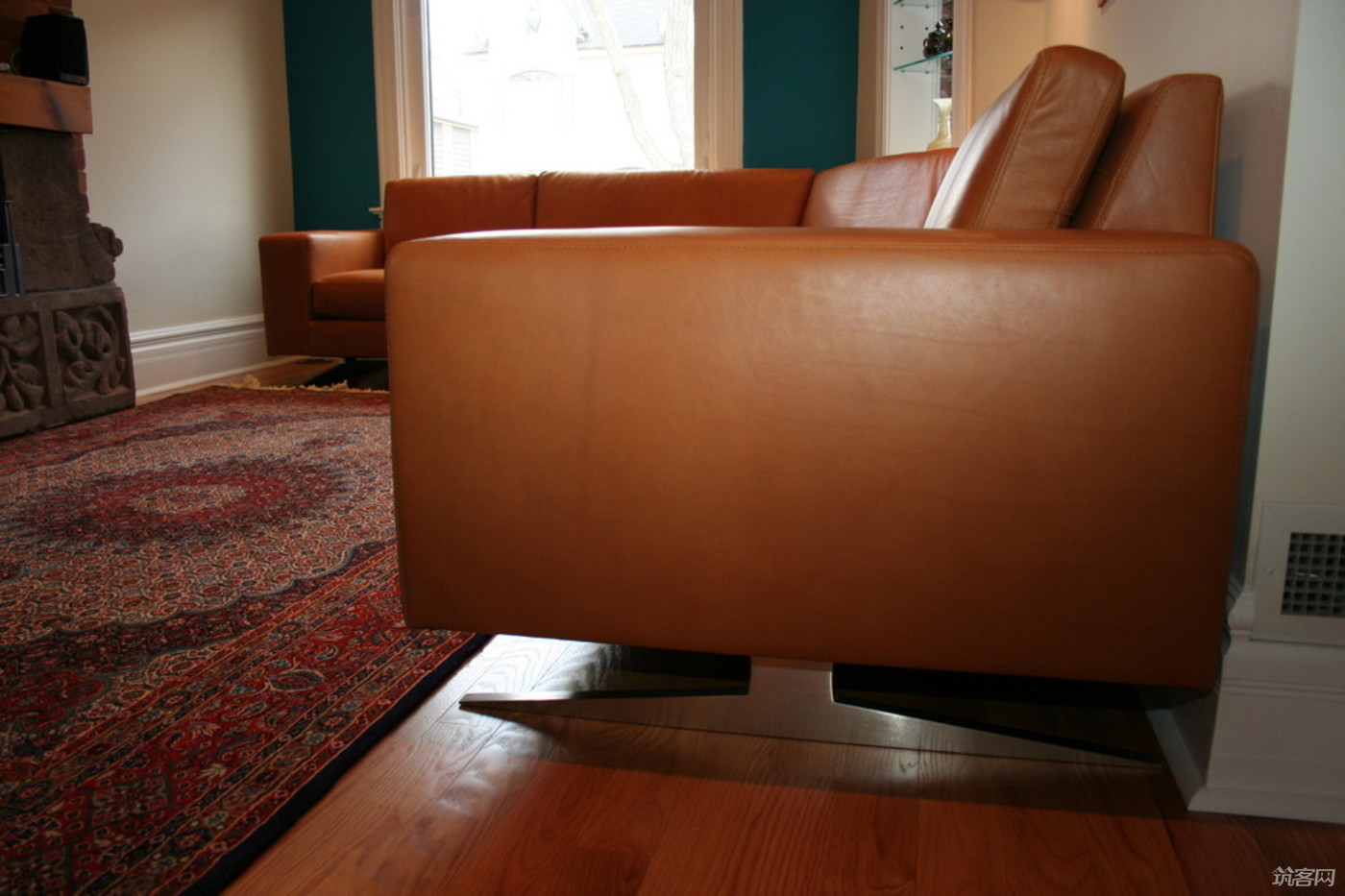Title: Restoring a leather sofa: A step-by-step guide to preserving its beauty
Restoring a leather sofa to its former glory requires patience, skill, and the right tools. The first step is to identify the cause of the damage. Is it wear and tear from everyday use or a more severe issue such as water damage? Once the cause is identified, move on to cleaning the sofa. Use a gentle cleaner that is safe for leather and follow the instructions carefully. After cleaning, apply a leather conditioner to keep the leather soft and supple.Next, apply a leather restorer to deep clean the sofa and bring back its original color. This process can take several hours or even days depending on the severity of the damage. After applying the restorer, let it sit for at least 24 hours before applying another coat.Finally, apply a protective coating to prevent future damage and maintain the sofa's beauty over time. With these simple steps, you can restore your leather sofa to its former glory and enjoy its beauty for years to come.
Introduction
Leather sofas are not only stylish and comfortable, but they also have timeless appeal. However, over time, they may begin to show signs of wear and tear, such as cracks, stains, or faded colors. Don't let your beloved leather sofa lose its charm - with the right care and techniques, you can restore it to its former glory. In this guide, we will walk you through the process of repairing a leather sofa, from preparing the surface to finishing touches. Whether you've inherited an antique piece or purchased a new one that needs some TLC, follow these steps to keep your leather sofa looking its best for years to come.
Step 1: Prepare the surface
Before applying any treatments or repairs, it's essential to clean the leather sofa thoroughly. Dust and dirt can accumulate on the surface, making it difficult for the treatment to adhere properly. Use a soft brush or cloth to remove any loose debris, then vacuum the sofa to remove any remaining dust.

To deep clean the leather, mix warm water and mild detergent in a bucket. Avoid using hot water, as it can damage the leather fibers. Dip a soft cloth into the solution and gently wring out the excess water. Then, apply the cloth to the entire surface of the sofa, pressing firmly but gently to ensure the soap reaches all areas. Rinse the cloth frequently to avoid spreading dirt or soap residue. Once the surface is clean, dry it thoroughly with another soft cloth.
Step 2: Repair minor cracks and stains
If your leather sofa has minor cracks or stains, you can try to fill them before applying any protective coatings. Use a small amount of leather repair cream or paste designed specifically for leather furniture. Apply a thin layer of the cream or paste to the crack or stain, then use a cotton swab or soft brush to smooth it out. Allow the cream or paste to dry completely before applying a second coat, if necessary.
For stains that cannot be removed with cream or paste, consider using a commercial leather cleaner that is suitable for the specific type of leather in your sofa. Follow the instructions on the product carefully and test it on an inconspicuous area first to ensure it doesn't damage the leather. Once the stain is removed, apply a protective coating as described earlier in this guide.
Step 3: Apply a protective coating
A protective coating can help prevent further damage to your leather sofa and extend its lifespan. There are several types of coatings available, including waterproof, UV-resistant, and stain-resistant. Choose a coating that is appropriate for your specific needs and application method.

To apply a waterproof coating, mix equal parts of water and rubbing alcohol in a spray bottle. Spray the mixture onto a soft cloth and wipe it down the entire surface of the sofa, paying special attention to any areas that are prone to moisture buildup, such as around doors or windows. Allow the couch to dry completely before applying another coat, if necessary.
For an UV-resistant coating, there are several products available on the market that can provide protection against fading caused by direct sunlight. Follow the instructions on the product carefully and apply it according to the manufacturer's recommendations. This type of coating may require frequent reapplication throughout the year to maintain its effectiveness.
Finally, for a stain-resistant coating, consider using a pre-treatment solution before applying any protective coatings. There are many pre-treatment products available that can help repel stains and make it easier to clean up spills. Apply a small amount of pre-treatment solution to a soft cloth and gently rub it onto the entire surface of the sofa, paying special attention to any areas that are prone to staining, such as dark spots or heavy traffic areas. Allow the couch to dry completely before applying a protective coating.
Conclusion
Maintaining the appearance of your leather sofa requires regular care and attention. By following these steps, you can keep your favorite furniture looking its best for years to come. Remember to always test any new products or treatments on an inconspicuous area before applying them to your entire sofa, and seek professional advice if you encounter any issues that you cannot resolve on your own. With proper care and attention, your leather sofa will continue to be a beautiful and functional addition to your home for many years to come.
Articles related to the knowledge points of this article:
Title: Exploring the Multifaceted World of Tie Patterns
The rise of cheap down jackets



